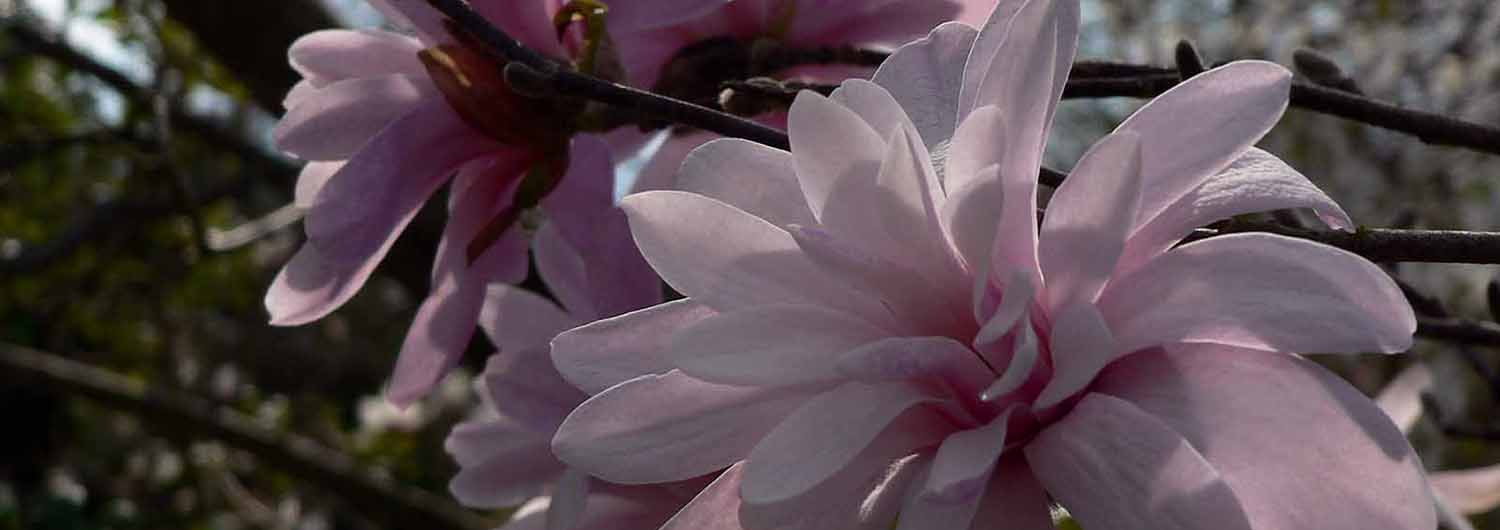Magnolia stellata
star magnolia
Deciduous magnolias are the epitome of the spring flowering tree with their large, fuzzy buds opening to reveal exuberant flowers arising from the tip of almost every branch. While the trend in breeding and selection in recent years has been to increase the already oversized flowers, the star magnolia, Magnolia stellata, with its more modestly sized blossoms remains one of my favorites.
The genus is one of the most ancient of flowering trees and contains over 200 species with two centers of distribution, Asia and the Americas. The typical large flower was tailor made to funnel big, bumbling beetles into the center to pollinate the flowers while the tough, woody carpels made it difficult for those same beetles to chew into the fruits. Fossils of plants belonging to this family have been dated to over 90 million years old. The genus was named for the French botanist Pierre Magnol, whose concept of plant families is still largely used today, in 1703 and later officially adopted by Carolus Linnaeus.
Magnolia stellata grows as a large mounding shrub or small tree, 15' to 20' tall and 10' to 15' wide often with multiple trunks and a billowy habit with age. The young stems are a lovely glossy red-brown fading to smooth grey with age. The lightly fragrant flowers are composed of typically 12 narrow, thin-textured tepals (petals and sepals) but in some selections such as 'Chrysanthemumiflora' there can be as many as 40. Flowers range from white to pink in their native Japanese habitat which is under threat from overdevelopment. The spring flowers are the main reason to grow the plant, but the strong branching and nice foliage keep it looking attractive over the summer and give it a nice structure in winter. The knobby, greenish fruit often drop early, but when they do mature, the bright red-orange seeds peek out from the splitting fruit.
The star magnolia thrives in full sun but tolerates and flowers in more shade than many other magnolias. Like most magnolias, the thick fleshy roots resent disturbance but I've found it reasonably forgiving of the poorly placed shovel blade. Once established, it requires little care other than watering during drought and the pruning of an occasional errant shoot. In coastal areas, it is tolerant of some salt spray. In the wild, it grows in moist almost boggy locales but in the garden it seems to prefer a rich, moist, well-drained spot.
The JCRA's M. stellata are mainly found at the eastern end of the Arboretum along with most of the Magnolia Collection. The Arboretum's specimens of the species arrived as seed from the Japanese Association for Star Magnolia (Shidekobushi) Conservation. Other selections at the JCRA include 'Scented Silver', with thicker textured petals and a beguiling citrusy aroma, 'Waterlily' with pale pink flowers, 'Jane Platt' whose deep pink buds open to light pink flowers, and my favorite, 'Chrysanthemumiflora' with its rich, full, pink flowers. One selection that the Arboretum does not have is 'Centennial' whose white flowers are perhaps the largest and purest of the group. This selection was named by the Arnold Arboretum in honor of its 100th anniversary.

